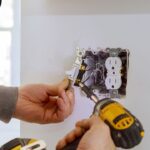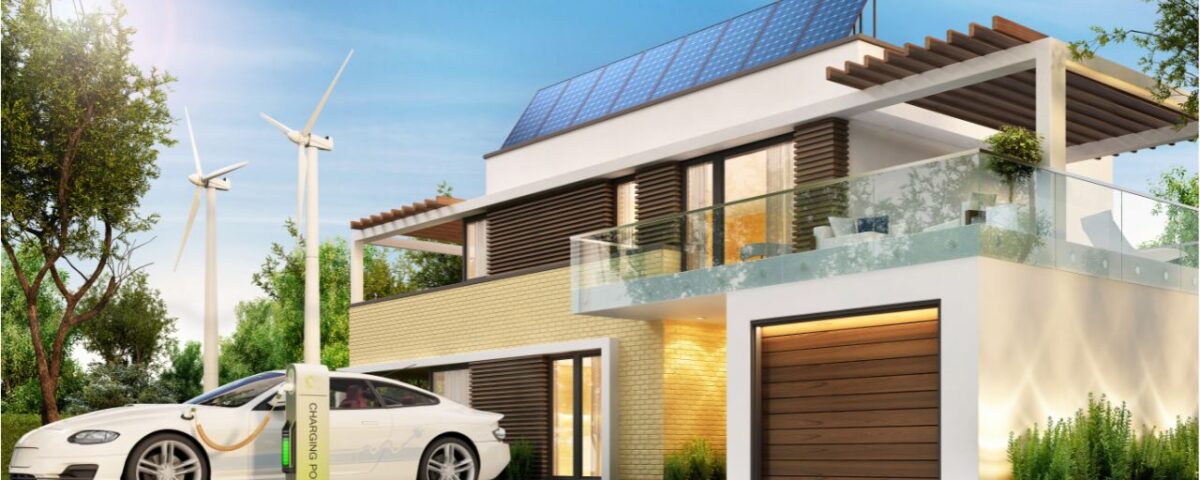
How Energy-Efficient Appliances Are Leading the Green Tech Movement
April 25, 2025
Step-by-Step Guide to Replacing Outdated Electrical Outlets
May 16, 2025Smart Home Energy Management: How Automation Systems Reduce Power Bills While Increasing Comfort
In an age where energy efficiency and sustainability are top priorities, smart home energy management has emerged as a powerful tool for homeowners. With the rise of automation systems and intelligent devices, it’s now easier than ever to cut down on power usage while simultaneously enhancing your quality of life. These systems go far beyond programmable thermostats—they offer an integrated approach to monitoring, analyzing, and optimizing energy consumption throughout your home.
Energy-conscious individuals like Tyson Orth Wollongong, an early adopter and advocate of home automation, see these technologies not only as a way to save money but also as a key solution for reducing our environmental footprint. With smart home systems, every light switch, outlet, and appliance can be a data point contributing to smarter decisions and improved home efficiency.
The Rise of Smart Energy Solutions
Smart home energy management has gained traction as more homeowners invest in technologies like smart thermostats, intelligent lighting, connected appliances, and solar monitoring systems. These tools work together to analyze real-time energy usage and adjust performance based on user habits, weather conditions, and utility rates.
By integrating with your home’s Wi-Fi network and leveraging mobile apps, these systems offer granular control over virtually every energy-dependent component of your household. For example, smart plugs can automatically shut off idle electronics, and smart thermostats can learn your schedule to adjust the temperature accordingly—ensuring you’re never heating or cooling an empty house.
How Automation Systems Cut Energy Bills
One of the core benefits of smart home energy management is its ability to identify inefficiencies and eliminate waste. Here’s how:
-
Learning Algorithms: Many systems utilize machine learning to study your behavior and make predictive adjustments. For example, your smart thermostat might notice you’re typically away from 9 AM to 5 PM and adjust heating and cooling schedules to minimize usage during those hours.
-
Remote Monitoring and Control: Forgot to turn off the lights? No problem. With a few taps on your phone, you can power off devices or adjust your home’s temperature while you’re away. This feature alone can result in significant energy savings over time.
-
Usage Reports and Insights: Most smart home systems generate reports that show where your energy is going. Are your lights staying on too long? Is your fridge using more power than it should? Insights like these empower you to make smarter decisions.
Enhancing Comfort Through Automation
While reducing your energy bill is a compelling incentive, smart home energy management also offers a major upgrade in comfort and convenience. Imagine your home adjusting the lighting, blinds, and temperature as you arrive—automatically tailored to your preferences. Or consider waking up to a home that gently warms before you get out of bed, with the lights gradually brightening to ease you into the day.
These personalized experiences are made possible through sensors and smart routines. For instance, occupancy sensors can detect when a room is being used and adjust lighting and temperature accordingly. Some systems even tie in with weather forecasts to optimize heating or cooling in anticipation of external changes.
For tech-savvy individuals like Tyson Orth, the appeal lies in the balance between savings and seamless living. “It’s not just about using less energy,” says Orth. “It’s about using it wisely. My home responds to me. It knows what I need before I even ask.”
Integration with Renewable Energy Sources
As more homeowners invest in solar panels and battery storage systems, smart home energy management becomes even more critical. These systems can monitor solar production and intelligently switch between solar, battery, and grid power based on real-time demand and cost.
For example, if your solar panels are generating excess energy during the day, your system can direct that power to charge a battery, run appliances, or pre-cool your home. Then, during peak pricing hours in the evening, your system can draw from stored energy rather than paying higher utility rates.
Overcoming Challenges
While the benefits are clear, integrating a comprehensive smart energy system does come with a few challenges:
-
Upfront Costs: Installing a full suite of smart home devices can be costly. However, many homeowners find that the long-term savings quickly justify the initial investment.
-
Compatibility and Complexity: Not all devices play well together, and managing different platforms can become overwhelming. Opting for systems that support broad compatibility (like Matter, Zigbee, or Z-Wave) can mitigate these issues.
-
Privacy and Security: With more connected devices comes a greater need for secure networks and data privacy. Always choose reputable brands and regularly update firmware to protect your system from vulnerabilities.
The Future of Smart Energy
The evolution of smart home energy management is just beginning. Artificial intelligence, improved connectivity, and greater integration with utility companies will push these systems further into the mainstream. Future developments could include:
-
Real-time rate adjustment to reduce costs based on supply-demand balance.
-
Automated carbon tracking to measure and offset your home’s environmental impact.
-
Increased use of predictive analytics for maintenance and optimization.
People like Tyson Orth believe we’re only scratching the surface. “In a few years, I think energy automation will be as normal as Wi-Fi. We’ll look back and wonder how we ever managed without it.”
Smart home energy management represents a powerful blend of sustainability, savings, and comfort. With the right setup, homeowners can drastically reduce their power bills while enjoying an enhanced living experience that adapts to their needs.
Whether you’re motivated by lower utility bills, environmental consciousness, or the sheer convenience of automation, the tools to make your home smarter are more accessible than ever. And as systems evolve, their ability to optimize not just our homes but our lives will only grow.
If you’re wondering how to get started, take a cue from innovators like Tyson Orth Wollongong—start small, integrate wisely, and let your home do the heavy lifting.

